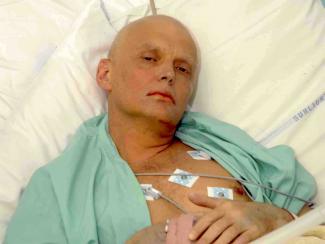Polonium 210 and Radiological Terrorism: International Convention Faces Litmus Test
Following the high profile assassinations of Alexander Litvinenko, a former KGB (erstwhile Soviet Union’s secret service-Komitet Gosudarstvennoy Bezopasnosti) agent in November 2006, the British investigators found that Litvinenko’s killers used polonium-210, a rare radioactive element worth over $10 million to poison him. Despite a flurry of accusations made by the deceased and his friends pointing the finger of suspicion towards Russia for the killing, officials at the Kremlin denounced the allegation and dismissed the role of the former spy in Russia’s security agency as ‘nonentity’ and ‘poor character.’ Russia in the past showed no reservation in using the chemical substance fentanyl against Chechen rebels to incapacitate them in the infamous Moscow theatre seizure in Oct. 2002.
However, Russian foreign minister Sergei Lavrov urged international communities, especially the United Kingdom not to politicise the issue and carry out their respective investigations following the trail as far as Germany and Israel. Even the Russian authority has surprisingly announced that it is investigating the involvement of dismantled Yukos Oil shareholder, Leonid Nevzlin in the Litvinenko case.
Polonium-210, also called ‘Radium F’ is made by neutron bombardment of bismuth or lead inside of a research reactor. Polonium was discovered by Marie and Pierre Curie in 1898. Unfortunately, their radiologist daughter Irene Curie was possibly the first person ever to die from the radiation effects of Polonium. Polonium-210 is highly lethal when entered into the human body by inhalation, ingestion, or getting into a wound. The study suggests that the toxicity of Polonium-210 is much higher than cyanides. Before 1944, Polonium had not been isolated in pure form or any appreciable quantity.
Though it is not yet clear who was behind the assassination, the preliminary investigation suggested that Litvinenko was given more than ten times the lethal dose. Is it possible for crime syndicates or terror outfits to procure such a huge amount of Polonium-210 from the open market or a reactor or place an order on the internet? How far is it cost-effective to use such a large quantity in a lone killing? Research on Polonium shows that it is highly dangerous to handle in even minimal quantity. With a life span of 138 days, special equipment and strict control are needed to deal with the radiation of its alpha particle. It is highly unlikely for rogue scientists or criminal syndicates to use it against their targets. Even it is close to impossible for regional insurgents and militant outfits to procure and use it ultimately. The only plausible players who can handle Polonium are international terrorist outfits like al Qaeda and the State or its sponsored groups. There are many questions to be answered as reports of the British investigating agencies are awaited. They are probing all angles including whether the poison was part of a consignment to be sold on the black market. It’s beyond doubt that only a state-sponsored organisation could procure such a large amount of Polonium-210. Experts believe that outfits with scientific expertise and proper explosives training could weaponise Polonium into an inhalable cocktail for lethal impact.
Evidences of the polonium have been discovered at various locations in London visited by the former spy including on two British Airways flights. The use itself violates a major international convention. Polonium as a radioactive material is covered under the International Convention for the Suppression of Acts of Nuclear Terrorism (ICSANT). Spearheaded by Russia and the US, it seeks to ban the use of “radioactive material which contain nuclides with spontaneous disintegration (a process accompanied by emission of one or more types of ionizing radiation, such as alpha, beta, neutron particles and gamma rays) and which may, owing to their radiological or fissile properties, cause death, serious bodily injury or substantial damage to property or the environment.” Though both countries have signed the Convention, the US has yet to ratify it. Russia’s Duma ratified the Convention in September this year. While India and Israel have ratified the convention before the deadline of Dec 31, 2006, Pakistan and Iran are yet to follow suit. To date, more than 110 States have signed and at least 12 nations have ratified the convention. However, the Convention needs 22 ratifications to enter into force and is presently open for signature by all States until 31 Dec. 2006 at United Nations Headquarters in New York.
It would be interesting to observe how far the ICSANT will play a crucial role in preventing terrorists from gaining access to nuclear materials and strengthening the international legal framework for suppressing terrorism. The Litvinenko event cast doubt over it already where a State’s role is doubted in using the radioactive material.
